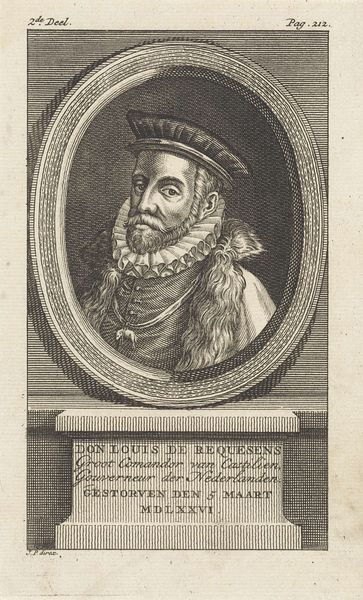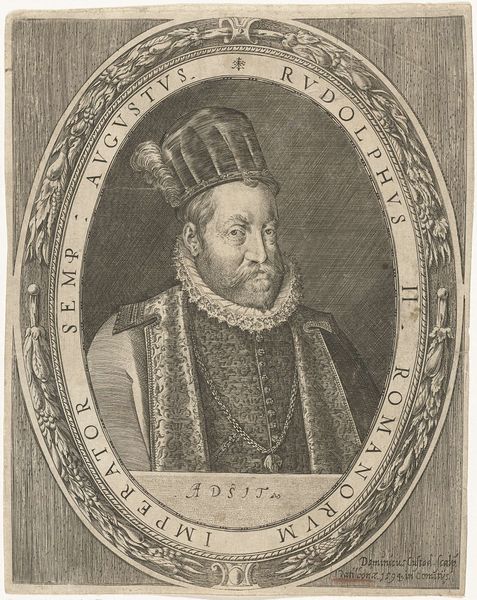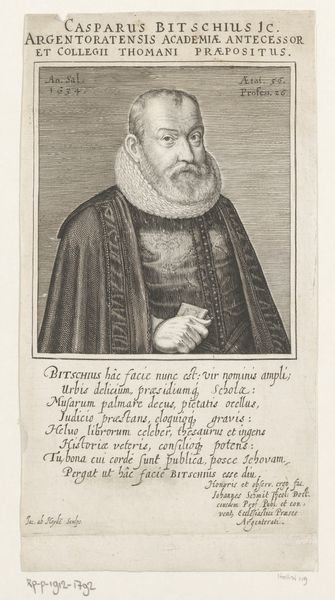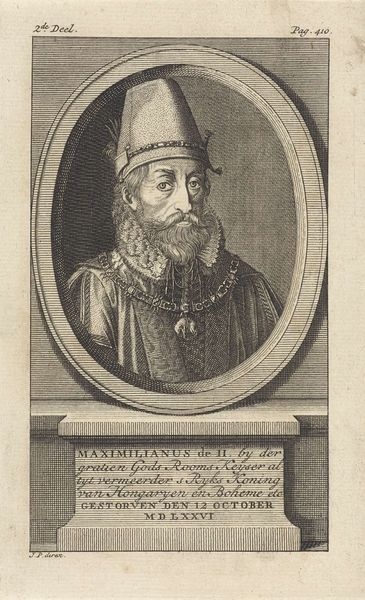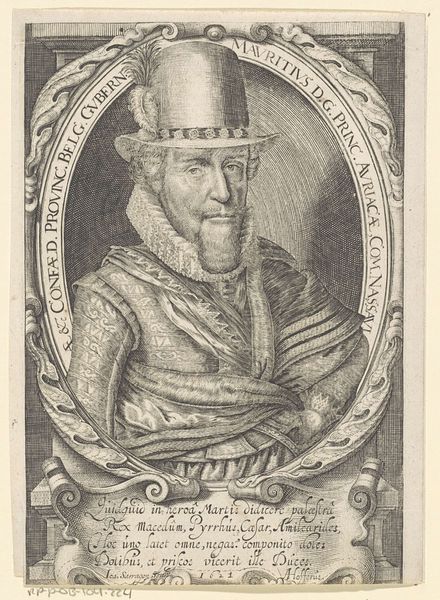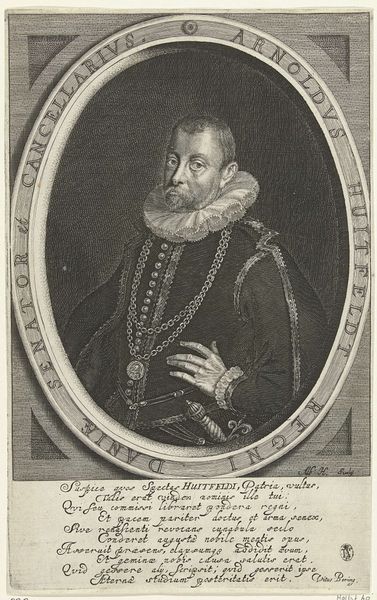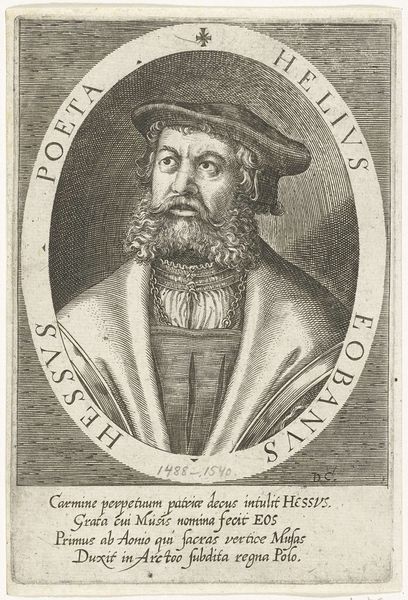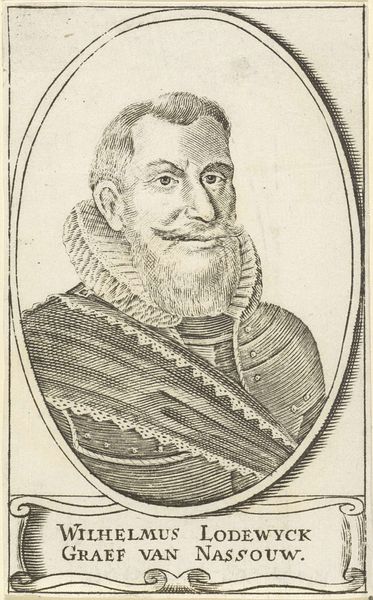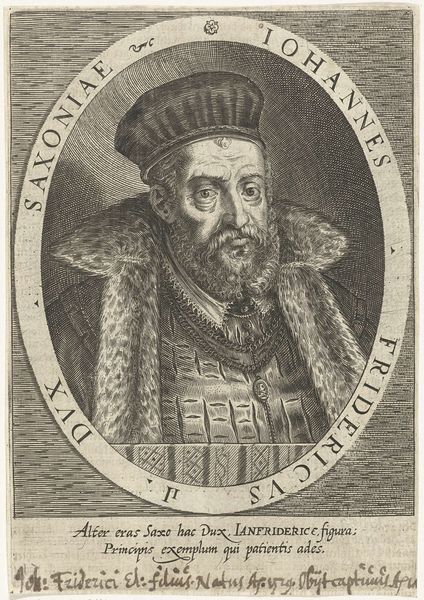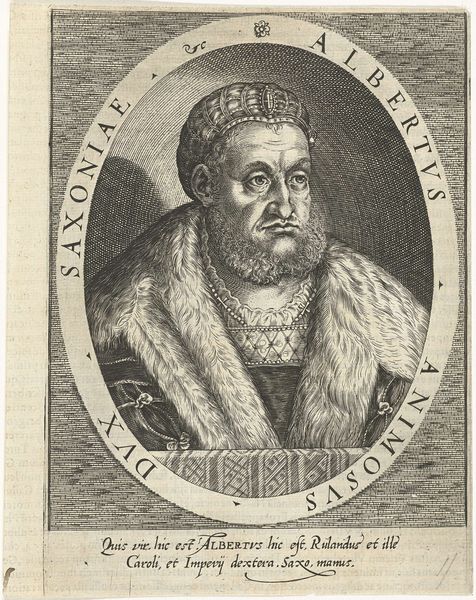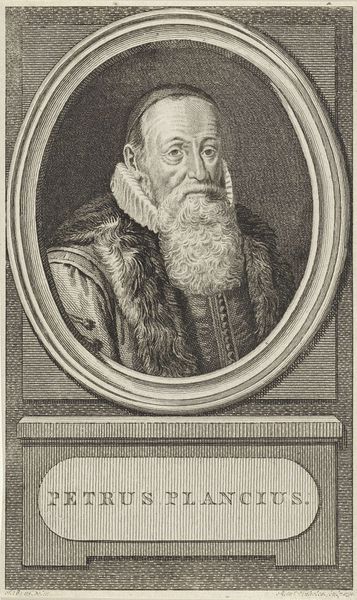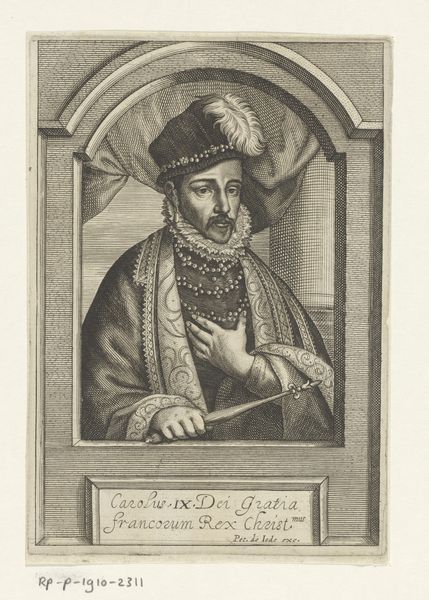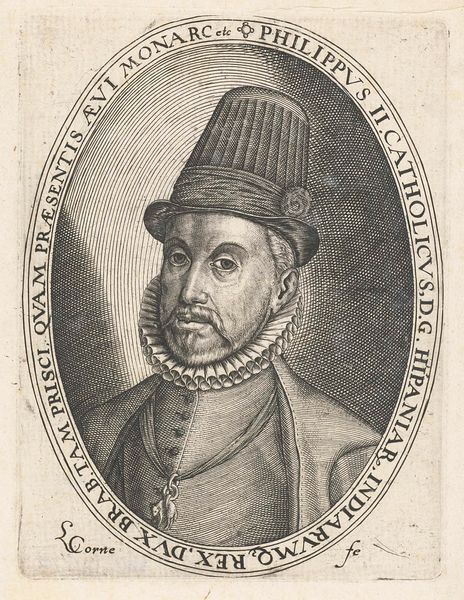
print, engraving
#
portrait
#
aged paper
#
baroque
# print
#
old engraving style
#
history-painting
#
engraving
#
realism
Dimensions: height 182 mm, width 109 mm
Copyright: Rijks Museum: Open Domain
Curator: We’re now standing in front of Jan Punt’s 1748 engraving, "Portret van Filips II, koning van Spanje." It’s currently part of the Rijksmuseum’s collection. Editor: The immediate impression is…stark. The severe, almost clinical lines of the engraving give the portrait a weight, a kind of immutable presence, framed tightly within that oval. Curator: Absolutely, that austerity speaks volumes. Consider the historical context: Philip II, King of Spain, a figure whose reign was marked by both immense power and intense religious and political conflicts. Editor: And technically, look at the meticulous detail achieved solely through line work. The cross-hatching to create depth in his face, the almost obsessive rendering of the ruff…it's all so precise. Curator: And what of that ruff? It cages the face. This could symbolize the restrictions, literally the suffocating protocols that characterized the court of Philip II and, more broadly, the power structures of the time. Also, note the inscriptions: It tells of his role in the Indies. This refers to the Spanish colonization which obviously bears relevance when evaluating art's ability to erase historical traumas and legacies. Editor: Interesting. To me, the ruff demonstrates virtuosity in texture. It plays against the flat planes of the face, offering an intricate focal point. And the severe dark hat? Curator: Ah, the hat. Another marker of his power, certainly. However, the portrait cannot only be viewed in isolation. This type of historical depiction should compel us to also look at other less flattering portrayals and texts that document colonial impacts to develop a holistic understanding of his reign and leadership. Editor: I can appreciate that perspective, yes. And taken solely as a work of graphic art, there is mastery here. It invites one to contemplate the power of form in constructing meaning, beyond its referential content. Curator: Agreed. We must hold multiple interpretations in balance. Art exists as both a document and a departure from the truth. Editor: A fitting final thought, encapsulating our approaches, perhaps.
Comments
No comments
Be the first to comment and join the conversation on the ultimate creative platform.
